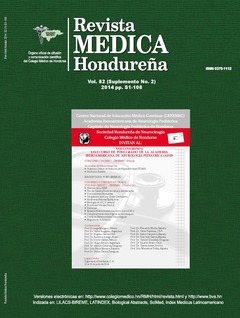Cerebral venous sinus thrombosis in children
Keywords:
Anticoagulants, Intracranial thrombosis, Sinus thrombosis, intracranialAbstract
Cerebral venous sinus (sinovenous) thrombosis (CSVT) in childhood is an under recognized disorder, not considered at first place during acute and subacute diseases. True incidence is unknown, estimated between 1-40 per 100,000 children per year and more than 40% of childhood CSVT occurs within the neonatal period. Thrombosis within the venous system results in local vasogenic and cytotoxic edema which may result in parenchymal ischemic injury, hemorrhagic or not. Clinical manifestations are nonspecific. Seizures, hyperactivity, lethargy and vomits are more common in neonates while focal neurologic signs and intracranial hypertension signs are more common in older infants and children. Risk factors are critical to diagnosis and are present in most cases; in the neonatal period the maternal factor, pregnancy, labor and delivery complications or severe neonatal diseases are common, as well as fever, infection, head trauma, dehydration and certain chronic medical conditions are common risk factors in older children. T1, T2, FLAIR and diffusion- weighted MRI is the best diagnostic approach to identify thrombosis and parenchyma injury associated. Although MRI with venography is considered the method of choice, is a technique prone to flow artifacts. There is currently consensus in most treatment guidelines that in old children and neonates, anticoagulation is indicated and safe, despite the presence of hemorrhage. CSVT specific mortality is about 10%, with 30-50% poor outcome and neurologic deficits in neonates.
Downloads
182




